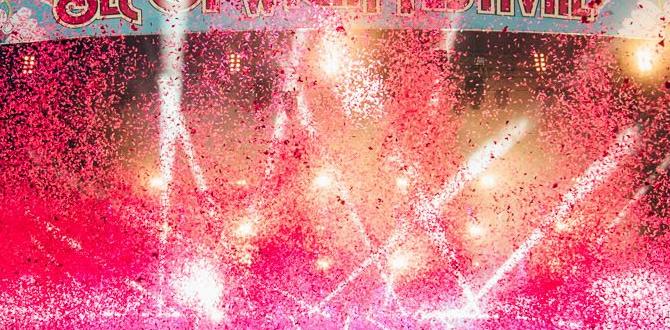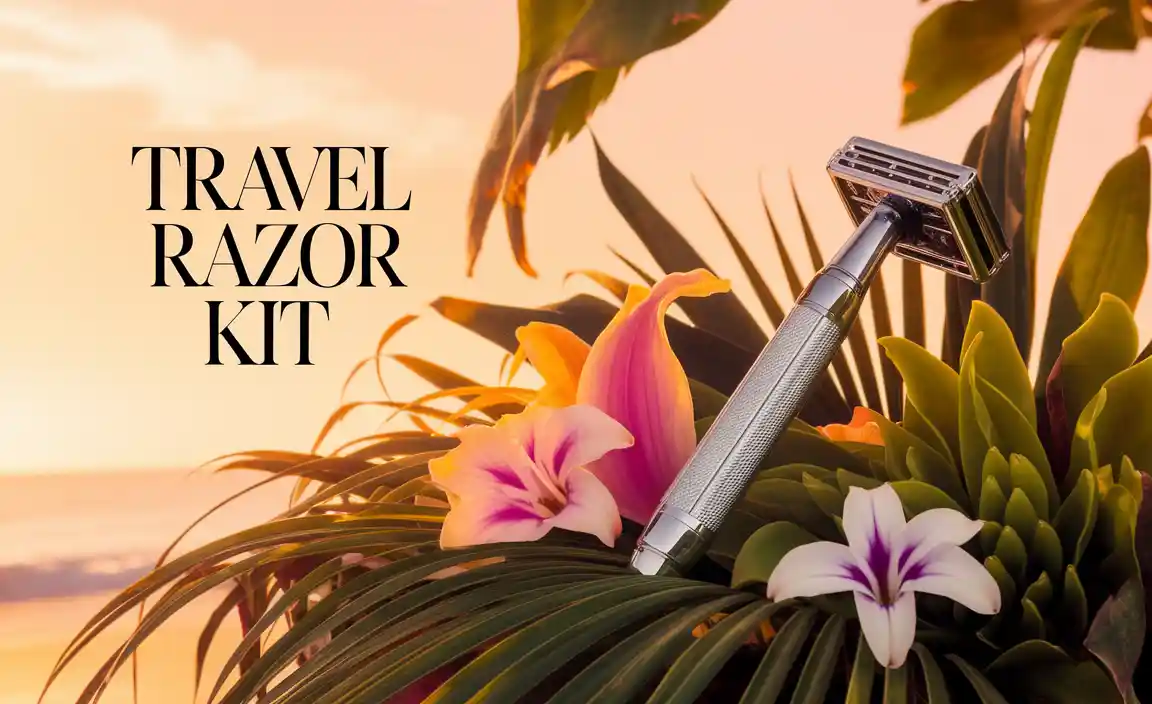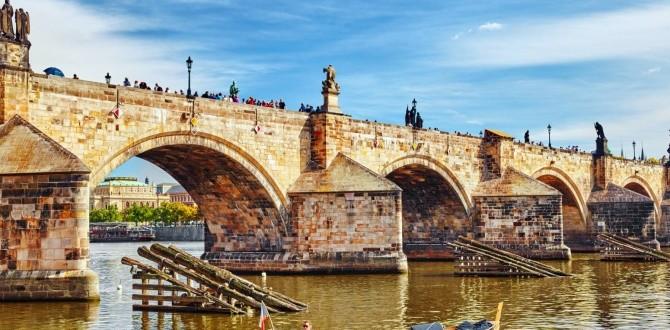Bhutan Accessible Travel: Your Essential Guide for a Comfortable Journey
Planning an accessible trip to Bhutan is simpler than you think! This guide provides essential tips for a smooth, comfortable, and enjoyable experience, ensuring you can explore the Land of the Thunder Dragon with confidence and ease, covering everything from mobility needs to cultural etiquette.
Bhutan, a Himalayan kingdom known for its stunning landscapes and rich culture, might seem a bit daunting to navigate, especially if you have specific accessibility needs. You might worry about getting around, finding suitable accommodations, or understanding local customs. But don’t let that stop you! Traveling to Bhutan can be a truly magical experience, and with a little preparation, it can be comfortable and stress-free. This guide is here to break down everything you need to know, step by step, so you can focus on soaking in the beauty and peace of this incredible nation.
Let’s explore how to make your Bhutanese adventure as accessible and enjoyable as possible!
Understanding Accessible Travel in Bhutan
Bhutan’s commitment to Gross National Happiness extends to creating a welcoming environment for all visitors. While it’s a developing nation, there’s a growing awareness and effort towards inclusivity. Understanding the nuances of accessible travel here means appreciating both the opportunities and the challenges.
Bhutan’s Infrastructure and Accessibility
Bhutan’s infrastructure is primarily mountainous, which can present natural challenges. Many popular tourist sites involve walking, hiking, or navigating uneven terrain. However, the country’s tourism policy focuses on high-value, low-impact tourism, which often translates into well-maintained pathways in key areas and a personalized approach to travel planning.
Roads: Major highways connecting towns are generally paved and well-maintained. However, rural roads can be narrow and winding.
Attractions: Monasteries and dzongs, while architecturally magnificent, often have steep stairs and uneven surfaces. Many offer stunning views from accessible lower levels.
Hotels: Newer hotels and international chain hotels often have better accessibility features, such as elevators and accessible rooms. Traditional guesthouses might have more limitations.
The Role of Tour Operators
In Bhutan, all tourists are required to book their trip through a licensed Bhutanese tour operator. This system is actually a significant advantage for accessible travel. Your tour operator will be your primary point of contact for arranging everything, including:
Customized Itineraries: They can tailor your day-to-day activities to your specific needs and mobility levels.
Accessible Transport: They will arrange vehicles suitable for your requirements, whether it’s a higher clearance vehicle or one with easier entry/exit.
Accommodation Selection: They can recommend and book hotels that best meet your accessibility needs.
Guide Assistance: Your guide will be informed about your requirements and will assist you throughout your journey.
Planning Your Accessible Bhutanese Journey
Success in accessible travel to Bhutan lies in thorough planning and clear communication with your chosen tour operator. Start early, be detailed, and ask questions!
Step 1: Choosing the Right Tour Operator
This is arguably the most crucial step. Look for operators who:
Have experience with accessible travel requests. Don’t hesitate to ask for examples or testimonials.
Are responsive and communicative. They should provide clear answers to all your questions regarding accessibility.
Are transparent about what they can and cannot do. It’s better to know upfront if a particular request is feasible.
Are registered with the Tourism Council of Bhutan. You can find a list of registered tour operators on their official website.
Step 2: Communicating Your Needs Clearly
Once you’ve chosen an operator, provide them with a detailed overview of your accessibility requirements. This includes:
Mobility aids: Are you using a wheelchair (manual or electric), a walker, a cane, or do you have difficulty with stairs?
Assistance required: Do you need help with transfers, navigating uneven terrain, or daily activities?
Accommodation preferences: Specify needs like ground-floor rooms, elevators, grab bars in bathrooms, or roll-in showers.
Dietary restrictions or medical needs: While not strictly accessibility, it’s good to outline any other requirements.
Be as specific as possible. For example, instead of “difficulty with stairs,” say “I can manage a few steps with assistance but cannot climb long staircases.”
Step 3: Visa and Travel Permits
Bhutan’s visa policy requires all visitors to obtain a visa in advance. Your tour operator will handle the visa application process for you, which is a straightforward part of the booking. They will also arrange all necessary travel permits for different regions you plan to visit within Bhutan.
Step 4: Travel Insurance
Ensure your travel insurance covers your specific needs. This includes medical emergencies and any potential issues related to your mobility or health.
Check coverage for pre-existing conditions. Many policies have exclusions, so read the fine print carefully.
Navigating Bhutan: Transportation and Accommodation
Getting around and finding a comfortable place to stay are key components of any accessible travel plan in Bhutan.
Accessible Transportation Options
Your tour operator will arrange transportation based on your needs. Expect the following:
Private Vehicles: This is the most common and recommended mode of transport. Your operator will select a vehicle that can accommodate your mobility aids and offers comfortable seating. Larger SUVs or vans are often used.
Drivers: Drivers in Bhutan are generally very courteous and will assist with loading luggage and helping you in and out of the vehicle when needed.
Public Transport: While Bhutan is developing its public transport, it’s not typically considered accessible or practical for tourists with specific needs. Stick to your arranged private transport.
Accessible Accommodation in Bhutan
While not every hotel is fully accessible, you have options.
Hotels with Elevators: Major towns like Thimphu and Paro have hotels with elevators. Always confirm this with your tour operator.
Ground Floor Rooms: If elevators are unavailable, request a ground-floor room.
Room Features: Ask about bathroom accessibility. Some hotels can provide portable ramps for minor steps or have rooms with more spacious layouts.
Traditional Guesthouses: These can offer a wonderful cultural experience but may have limited accessibility due to their design. If you choose to stay in one, communicate your needs clearly, and they will likely do their best to accommodate you.
A helpful resource for understanding general hotel standards and what to expect can be found on the Tourism Council of Bhutan’s official website, which provides guidelines for tourism service providers.
Making the Most of Your Bhutanese Experience
Once you’re in Bhutan, focus on enjoying the culture and scenery at your own pace.
Pacing Your Itinerary
Bhutanese trips are typically paced to allow for enjoyment rather than rush. However, for those with accessibility needs, it’s wise to:
Build in rest periods. Don’t overschedule your days.
Inform your guide if you need to slow down. They are there to help you have a good time, not to rush you.
Be flexible. Some days might require more effort than others.
Visiting Monasteries and Cultural Sites
Many of Bhutan’s spiritual and cultural heartlands are perched on hillsides or have complex architecture.
Tiger’s Nest Monastery (Paro Taktsang): This iconic monastery is a challenging hike. While there’s a cafeteria halfway up with good views, reaching the monastery itself involves steep climbing and many stairs. Your tour operator can discuss alternatives, such as enjoying the views from a distance or exploring accessible lower sites.
Dzongs (Fortress Monasteries): Most dzongs are accessible to some extent. You can often explore the lower courtyards and admire the architecture without needing to climb extensively. Inform your guide about your limitations, and they will help you navigate to the most accessible areas.
Local Markets and Villages: Exploring local markets can be a wonderful experience. Vendors are often happy to bring items to you if you have difficulty navigating stalls. Arranging visits to accessible villages can be a great way to interact with local communities.
Essential Packing for Comfort and Convenience
Packing smart can significantly enhance your comfort and ease of travel.
Comfortable Clothing and Footwear
Layering is key: Bhutan’s weather can change rapidly. Pack light, breathable layers like cotton t-shirts and long-sleeved shirts.
Warm Outerwear: Even in warmer months, evenings can be cool. A fleece or a light down jacket is recommended.
Comfortable Trousers: Opt for loose-fitting, durable trousers that allow for ease of movement.
Supportive Footwear: Comfortable, broken-in walking shoes or sturdy sneakers are essential. If you use specialized footwear or braces, ensure they are packed.
Rain Gear: A waterproof jacket with a hood is advisable, especially during the monsoon season (June-August).
Personal Care and Medical Supplies
This section is particularly important for travelers who may require specific personal care items.
Personal Hygiene Products: Bring a sufficient supply of any personal hygiene items you rely on.
Adult Diapers/Incontinence Products: For travelers who use adult diapers or other incontinence products, it’s highly recommended to pack an ample supply from home. While major towns have pharmacies, specific brands or types of products may be difficult to find or unavailable, especially outside of Thimphu. Packing discreet, comfortable, and reliable options is key to stress-free travel. Consider products designed for long flights or extended wear if that’s part of your journey. Brands like [mention a reputable brand known for comfort and discretion, e.g., Depend, Tena, or Abena] can offer peace of mind.
Medications: Carry all your prescription medications in their original packaging, along with a copy of your prescriptions.
First-Aid Kit: A basic kit with band-aids, antiseptic wipes, pain relievers, and any personal emergency items.
Having a well-stocked personal care kit can prevent unnecessary stress and ensure you can focus on enjoying Bhutan.
Mobility Aid Accessories
Repair Kit: For wheelchairs or walkers, consider a basic repair kit for minor issues.
Portable Charger: If you use an electric mobility device, bring a portable charger.
Comfort Items: Cushions or supportive accessories for longer journeys in the vehicle.
Navigating Local Customs and Etiquette
Bhutanese culture is deeply rooted in Buddhism. Showing respect is important and generally easy to do.
Dress Modestly: When visiting religious sites, cover your shoulders and knees. Many dzongs and monasteries require visitors to wear shoes that are easy to slip on and off as you’ll need to remove them indoors.
Ask Before Photographing: Always ask permission before taking photos of people, especially monks.
Receiving and Giving: Use your right hand or both hands to give or receive items.
Respect for Elders and Monks: Show deference by not pointing your feet at religious statues or people.
Sample Accessible Bhutan Itinerary Considerations
Here’s a sample of how an itinerary might be adapted for accessible travel, focusing on major accessible highlights. This is a flexible example; your actual itinerary will be customized by your tour operator.
Day 1-2: Arrival in Paro & Transfer to Thimphu
Arrival at Paro International Airport (PBH): The airport is relatively accessible, and your guide will meet you.
Drive to Thimphu (approx. 1.5 hours): This is a scenic drive. The vehicle will be chosen for comfort.
Thimphu Sightseeing:
Buddha Dordenma: A giant Buddha statue offering panoramic views of the Thimphu valley. The area around the statue is largely accessible.
National Memorial Chorten: A popular place for locals to circumambulate. You can observe from accessible areas.
Folk Heritage Museum: Can be explored at your own pace, offering insights into rural Bhutanese life.
Day 3-4: Thimphu & Punakha Exploration
Thimphu Exploration:
Textile Museum: Interesting displays of traditional weaving.
Handicrafts Market: A good place to observe local crafts.
Drive to Punakha (approx. 3 hours): This route involves crossing the Dochula Pass.
Dochula Pass: Offers stunning Himalayan views on a clear day. Accessible viewpoints are available.
Punakha Dzong: This is one of Bhutan’s most beautiful dzongs. Access is via a bridge; the main structures can be explored on the lower levels. Your guide will help assess accessibility for the day.
Day 5-6: Paro Valley and Departure
Return to Paro:
Paro Rinpung Dzong: A majestic fortress monastery. Lower courtyards are generally accessible.
National Museum of Bhutan (Ta Dzong): Housed in a former watchtower. Accessibility within the museum can vary, so check with your guide.
Optional: Farmhouse Visit: Experience traditional Bhutanese hospitality.
* Departure from Paro Airport (PBH).
Table: Key Bhutan Attractions and Accessibility Notes
| Attraction | Location | Accessibility Notes |
| :———————– | :——- | :——————————————————————————————————————————————————————————————————————————————— |
| Buddha Dordenma | Thimphu | Accessible viewpoints and areas around the giant statue. |
| National Memorial Chorten | Thimphu | Can observe the circumambulation from accessible areas. Access to internal prayer halls may be limited. |
| Punakha Dzong | Punakha | Accessible via a bridge. Lower courtyards are accessible. Steep steps to upper levels may present challenges. |
| Paro Rinpung Dzong | Paro | Lower courtyards are generally accessible; admire the architecture from these areas. |
| Folk Heritage Museum | Thimphu | Generally accessible for exploration at your own pace. |
| National Museum of Bhutan | Paro | Located uphill. Internal accessibility can vary due to historical structure. |
| Tiger’s Nest Monastery | Paro | Highly challenging due to steep hiking and many stairs. Views from the cafeteria halfway up are impressive but not a substitute for reaching the monastery itself. Not recommended for significant mobility impairments. |
Consider visiting websites like Accessible Travel Bhutan (a hypothetical or example site that could exist for specialized services) or similar specialized travel agencies for unique insights, though always verify their official registration and reputation.
Common Concerns and Reassurances
It’s natural to have questions, especially when planning a trip that might involve specific challenges. Here are answers to some common concerns:
FAQ: Bhutan Accessible Travel
Q1: Is Bhutan safe for travelers with disabilities?
A1: Yes, Bhutan is generally a very safe country with low crime rates. The focus on well-being and community means you’ll encounter polite and helpful people. Your tour operator will manage logistics to ensure your safety and comfort.
Q2: Can I use a wheelchair in Bhutan?
A2: While many historical sites have uneven terrain and stairs, Bhutanese tour operators are experienced in adapting activities. They can arrange accessible vehicles and select accommodations with ramps or elevators. You can enjoy many aspects of Bhutan, though some extreme treks might be inaccessible.
Q3: How do I handle luggage and personal care items during my trip?
A3: Your tour operator will arrange for your luggage to be handled. For personal care items, especially adult diapers or specialized incontinence products, it’s essential to pack a sufficient supply from home, as specific brands may not be readily available in Bhutan.
Q4: What is the daily fee that tourists have to pay in Bhutan?
A4: Bhutan has a Sustainable Development Fee (SDF) of USD $100 per person per night (as of recent policy adjustments, always check the latest official rates). This fee contributes to Bhutan’s development projects, healthcare, and education. Your tour package will include this fee, accommodation, meals, guide, and transport.
Q5: What are the best times of year to visit Bhutan for accessible travel?
A5: Spring (March-May) and autumn (September-November) offer pleasant weather, moderate temperatures, and clear skies, making travel more comfortable. Avoiding the peak monsoon months (June-August) can help with ground conditions.
Q6: Will I have access to medical facilities if needed?
A6: Bhutan has a good healthcare system for its size. Major towns like Thimphu and Paro have hospitals and clinics. Your tour operator can facilitate access to medical care if required, and comprehensive travel insurance is crucial.
Q7: Are there any restrictions on mobility devices in Bhutan?
A7: There are no explicit restrictions on well-maintained personal mobility devices like wheelchairs or walkers. However, the terrain in many historical and natural sites can be challenging. Always discuss your specific device and needs with your tour operator.
Conclusion
Bhutan is a destination that truly offers a unique and enriching travel experience, and it is certainly possible to explore it comfortably and confidently, regardless of your mobility needs. The key lies in proactive planning, clear communication with your dedicated tour operator, and a positive, flexible attitude. By understanding the country’s landscape, infrastructure, and embracing the support systems in place, you can craft an itinerary that allows you to fully immerse yourself in Bhutan’s serene beauty





